Presented here are examples of newspaper and periodical material relating to the national debt, government spending, and Treasury Bonds. The American press has a centuries-long tradition of political editorial cartoons, and featured are examples from 19th Century publications such as Harpers and Puck. Also presented are examples of advertising relating to the sales and brokerage of government bonds.
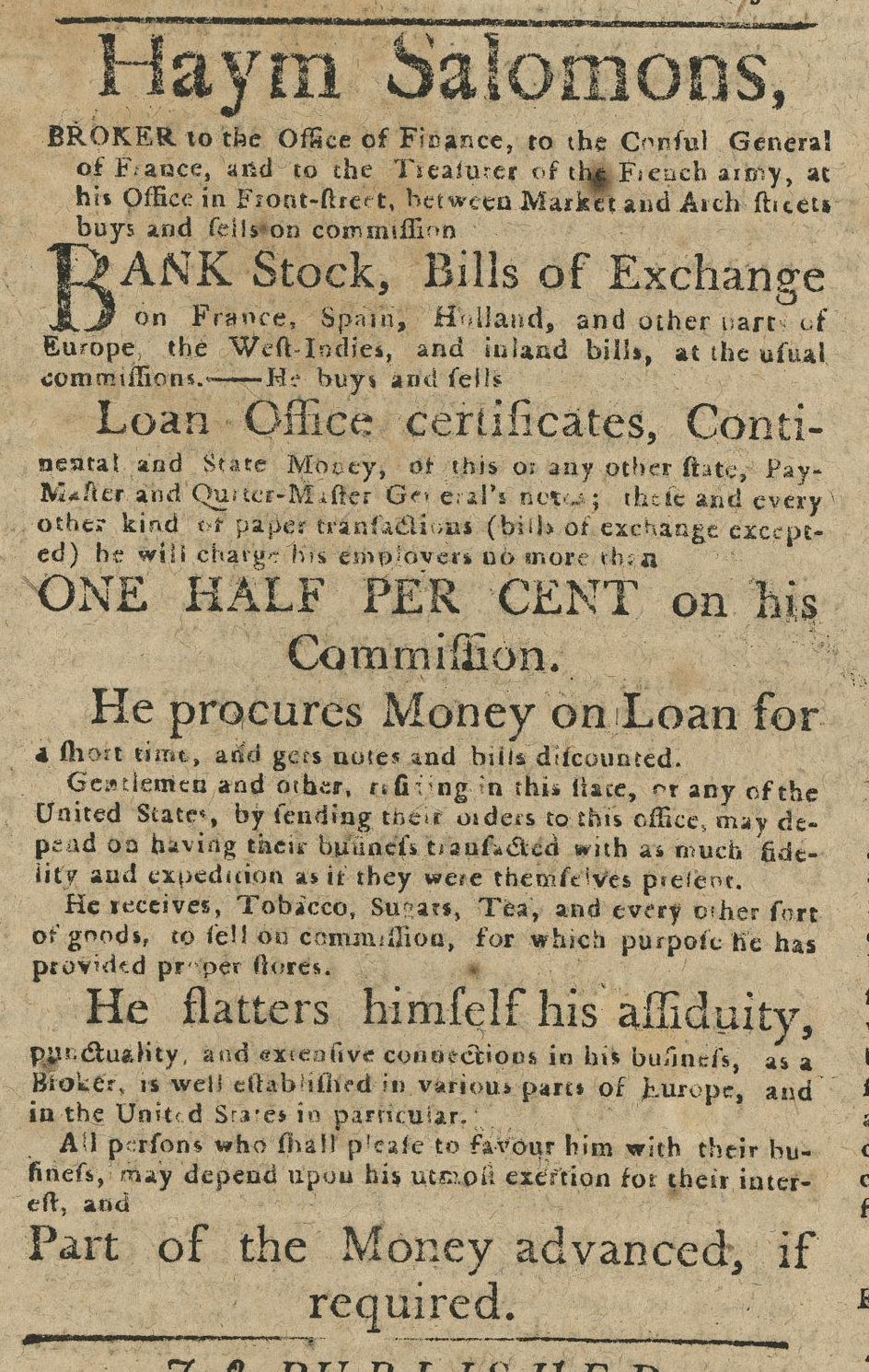
March 8th, 1783 The Pennsylvania Journal and Weekly Advertiser
Haym Salomon Advertisement
This mid-18th Century paper was noted for its coverage of the American Revolution, especially for the contibutions of Thomas Paine. It was published Wednesdays and Saturdays, and was priced at six pence. In this March 1783 edition, an advertisment for Revolutionary War financier Haym Salomon is found, listing the various financial services his trading house provided. Much of Salomon's business was brokering Bills of Exchange, which helped finance the war effort against Great Britain, along with providing many leading American political figures needed funding to keep their own finances in order.
1800's Illustration
"Scene in the Treasury, Wall Street- Buying Government Bonds"
This illustration depicts a mid-19th Century scene on Wall Street. Neither the source of publication nor the artist is named. A copy of this illustration is found within the New York Public Library's Digital Collection, attributing the depiction to that of a Civil War era scene, with a publication date around the late 1800's.
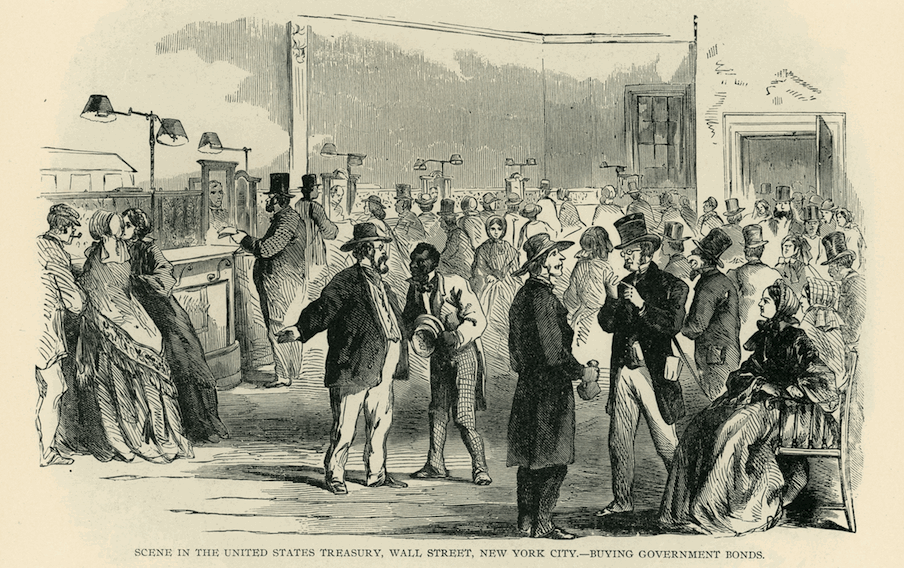

1861 Harper's Monthly Magazine
"$100 Interest-Bearing Note Illustration"
This illustration depicts a representation of a Three-year $100 Interest-Bearing Note, eventually issued in 1865 by the Treasury Department during the Civil War

November 5, 1864 Punch Magazine
"The American Brothers" Editorial Cartoon
Published from 1841 – 1992, Punch also known as The London Charivari was a satirical British weekly. During its early years of publication, the magazine helped coin the term "cartoon," as the magazine was known for its humorous political illustrations.
This illustration depicts President Abraham Lincoln and Confederate President Jefferson Davis, both bound by the war debt incurred fighting the Civil War. The United Kingdom had remained officially neutral throughout the war, though it had traded for a time with the Confederacy.

May 30th, 1874 Harper's Weekly
"The Arab and the Camel" Editorial Cartoon
Published from 1857 – 1916, Harper's Weekly was a political magazine published by Harper & Brothers. During this period in American history, the publication extensively covered events from the Civil War. The famed political cartoonist Thomas Nast worked for the magazine. For a time, Harper's Weekly openly favored Republican party politics, although they endorsed the 1884 election of Grover Cleveland. The magazine continued to cover political and social issues into the 20th Century.
In this cartoon, satirist Thomas Nast takes aim at the mounting federal debt. The debt, along with paper 'Green-back' currency issued by the Treasury, are seen as a burdening load upon the United States. Featured in the background is a mountain of "inflation." The straight path of hard currency (specie), is depicted opposite the mountain's direction. The cartoon's quotation is directly taken from one of Aesop's fables.
Drawn by Thomas Nast

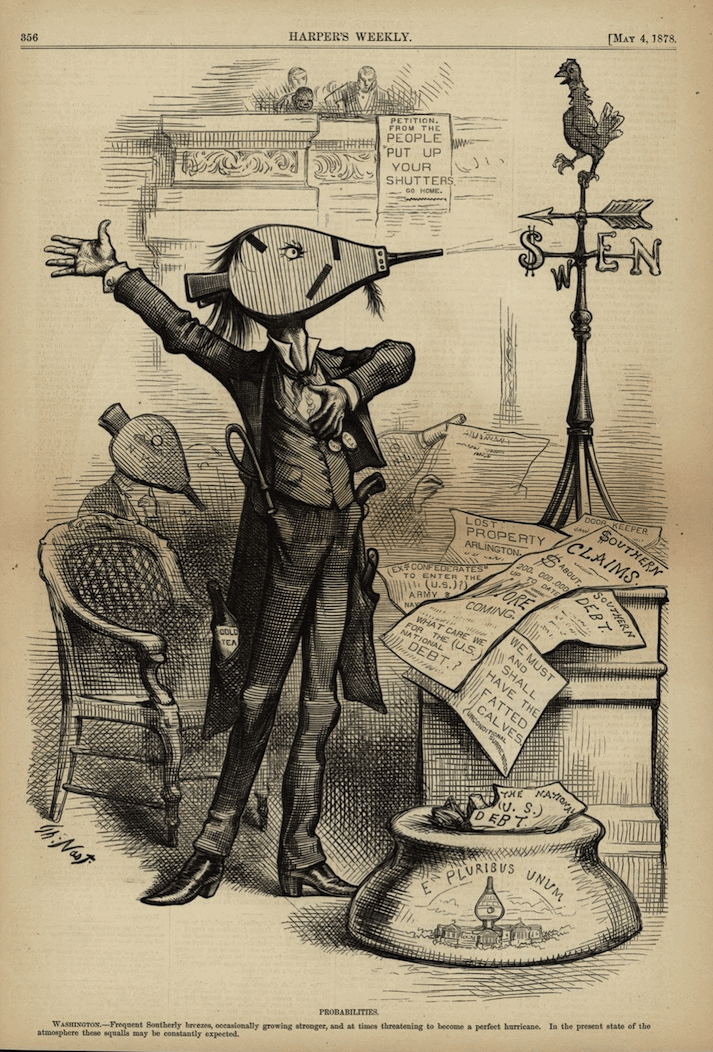
Drawn by Thomas Nast
February 6, 1878 Harper's Weekly
"Apropos" Editorial Cartoon
As illustrated by a parable, this cartoon comments on the state of the economy during a depression, along with the erosion of the U.S. dollar.
May 4, 1878 Harper's Weekly
"Probabilities" Editorial Cartoon
This editorial cartoon comments on the economic challenges the nation faced in the wake of ending Reconstruction. The national debt is featured.
May 25, 1878 Harper's Weekly
"Revenge is an Expensive Luxury" Illustration
This cover illustration depicts "John Bull," the fictional personification of Great Britain similar to America's "Uncle Sam." The cartoon references timely economic issues- notably the U.S. national debt, and claims America had outstanding with Great Britain over reparations owed for British support of the Confederacy,.

Drawn by Thomas Nast

May 10, 1870 Leslie's Illustrated Newspaper
Leslie's was a weekly news and literary magazine published by the famed illustrator Frank Leslie. The cover of this issue announces the recent Treasury issue of the 1879 $10 Refunding Certificate. An example of this debt issue is found within The Herbstman Memorial Collection.
May 1880 Harper's Monthly
"Making United States Bonds Under Pressure" by L.E. Chittenden
Started in 1850, Harper's Monthly is America's second-oldest continuously published magazine. Unlike Harper's Weekly which was solely focused on politics, Harper's Monthly also covered topics in literature, the arts, finance and culture. The magazine today is known as Harper's.
Click to view text
August 7, 1880 Harper's Weekly
"A Great Question"
This cover, portraying Lady Liberty showing the national debt from 1860-1880, poses the question, "Which (political) party do you trust, the one that made this debt, or the one that has so far paid it?"

Drawn by Thure de Thulstrup

May 8th, 1889 Puck Magazine
"Getting Rid of the Surplus" Editorial Cartoon
Published from 1876 – 1918, Puck was the nation’s first successful political satire magazine. Originally printed in both German and English language editions, the weekly took its name from the irreverent Shakespearean character. It was distinctly partisan, favoring what were known at the time as the “Bourbon Democrats,” the most famous being President Grover Cleveland.
Puck was known for its editorial cartoons, which were printed in color. The piece here is an 1889 satire of the Republican Party. The commentary is critical of the government’s purchase of its own Treasury securities at prices above par. The implication is that the Republicans are enriching wealthy financial monopolists, (the sellers of bonds to the government), whilst fleecing the taxpayers by mismanaging government surplus revenue- revenue generated from high tariff policies on necessary goods.
Drawn by C. J. Taylor
January 25, 1896 Judge Magazine
"A Bitter Pill" Editorial Cover
Published from 1881 – 1947, Judge was a satirical political weekly founded as a rival to the then popular magazine Puck. Purchased in the mid 1880's by William J. Arkell, Judge took on a decidedly Republican bias, and often attacked the administration of President Cleveland. The magazine continued its success into the early 20th Century before fading in popularity to rivals such as The New Yorker.
This Judge cover is an example of the political leanings of its editors. President Cleveland, a Democrat, is asking Uncle Sam to swallow the (bitter) pill of issuing more debt in the form of Treasury Bonds. The United States was in the midst of an economic depression, beginning with the Panic of 1893 and then exacerbated by the Panic of 1896. The implication of the cartoon is that Uncle Sam would indeed be better off relying on the remedies (tonic) of Senator John Sherman (R), author of the Sherman Antitrust Act (1890) and the Sherman Silver Purchase Act (1890).

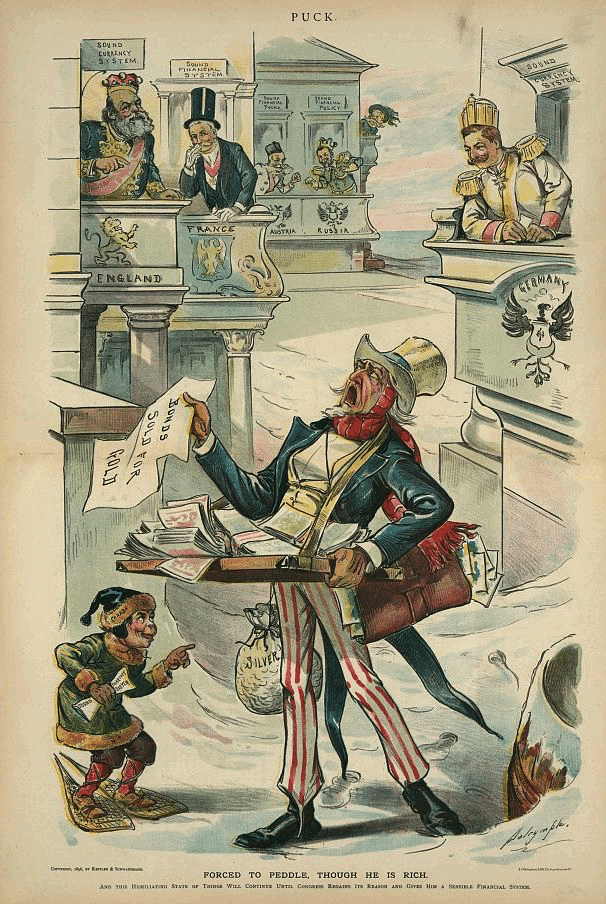
February 5, 1896 Puck Magazine
"Forced to Peddle Though He's Rich" Editorial Cartoon
This editorial cartoon portrays Uncles Sam as being forced to sell U.S. Treasury debt in the capitals of Europe, exchanging securities for hard currencies of gold and silver. The caption of the cartoon reads: "And this humiliating state of things will continue until Congress regains its reason and gives him a sensible financial system."
Drawn by Louis Dalrymple

Drawn by Louis Dalrymple
December 15, 1897 Puck Magazine
"A Troublesome Infant- He Grows Faster Than His God-Fathers Expected" Editorial Cartoon
This editorial cartoon depicts the federal budget deficit as an ravenous baby to the Congress, unsatisfied with the recent Dingley Act taken to increase government revenue.

July 2nd, 1898 Harper's Weekly
"Buying War Bonds at the Sub-Treasury" Illustration
This illustration depicts New York citizens purchasing the 3% bonds issued to finance the Spanish-American War. Federral Hall, (the Sub-Treasury office), was located at 55 Wall Street, and served as one of several Treasury Department offices throughout the nation.
Drawn by W. A. Rodgers


August 24, 1907 The Commercial & Financial Chronicle
This weekly periodical was an American version modeled off the popular English newspaper, "The Economist." Founded in 1865, the publication lasted over 100 years until 1987. Selected from this issue are Treasury bond quotes from the previous night's closing prices.
Liberty Loan Magazine Advertisements



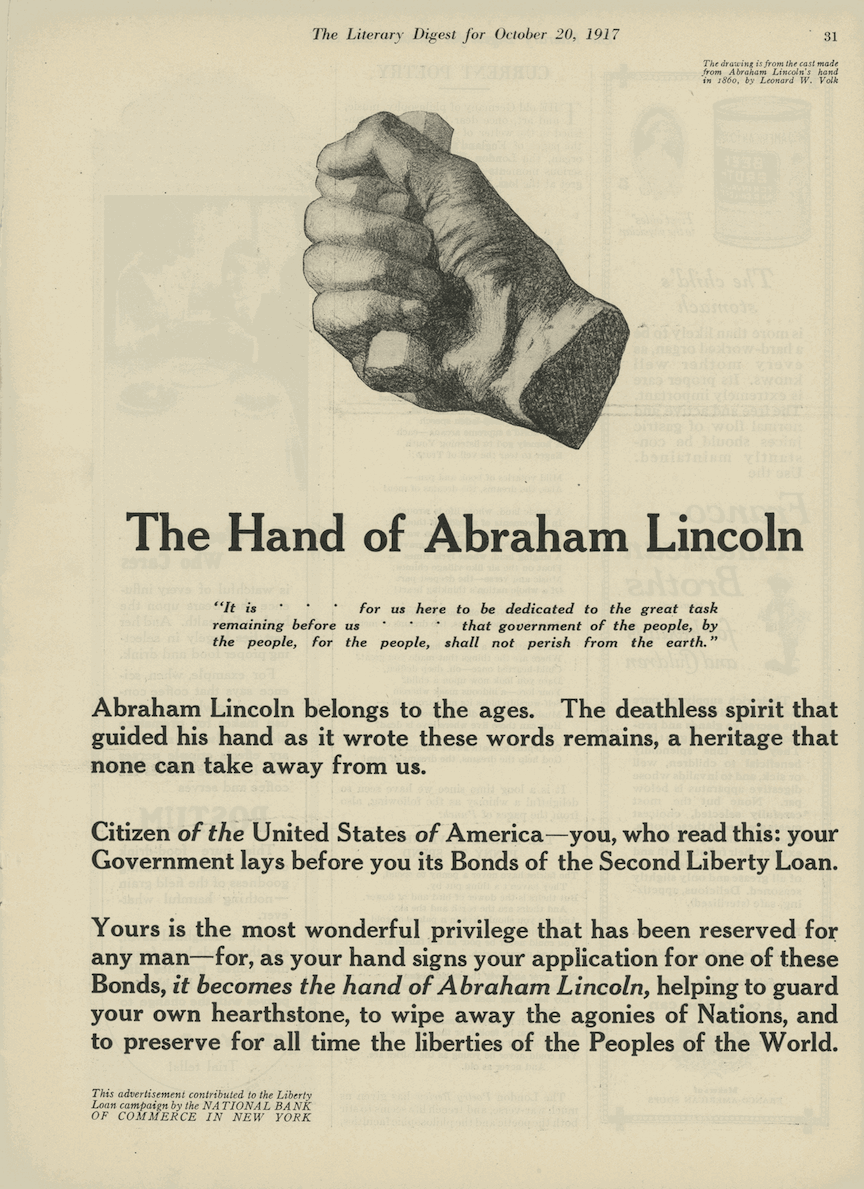
1917 Issue: National Geographic
1917 Issue: The Island Printer
1918 Issue: The World's Work Advertiser
1917 Issue: The Literary Digest

June 21, 1917 Life Magazine
"The Little Bondholder" Illustration



March 9, 1918 Leslie's Illustrated Weekly
"The War in Pictures" Issue
The cover of this issue advertises the Third Liberty Loan, suggesting that the war can be won by burying the Kaiser with American financial might. Presented here are two clippings: an article about government bonds and an advertisement for the National City Banking Co.


Back Cover
August 1, 1918 Scouting Magazine
The Boy Scouts of America played an important role in the sale of the WWI Liberty Loans. In addition to the direct sale of bonds by Scouts, there was powerful symbolism in millions of young boys pitching in to help the country in a time of war.
War Savings Stamp (WSS) Magazine Advertisements

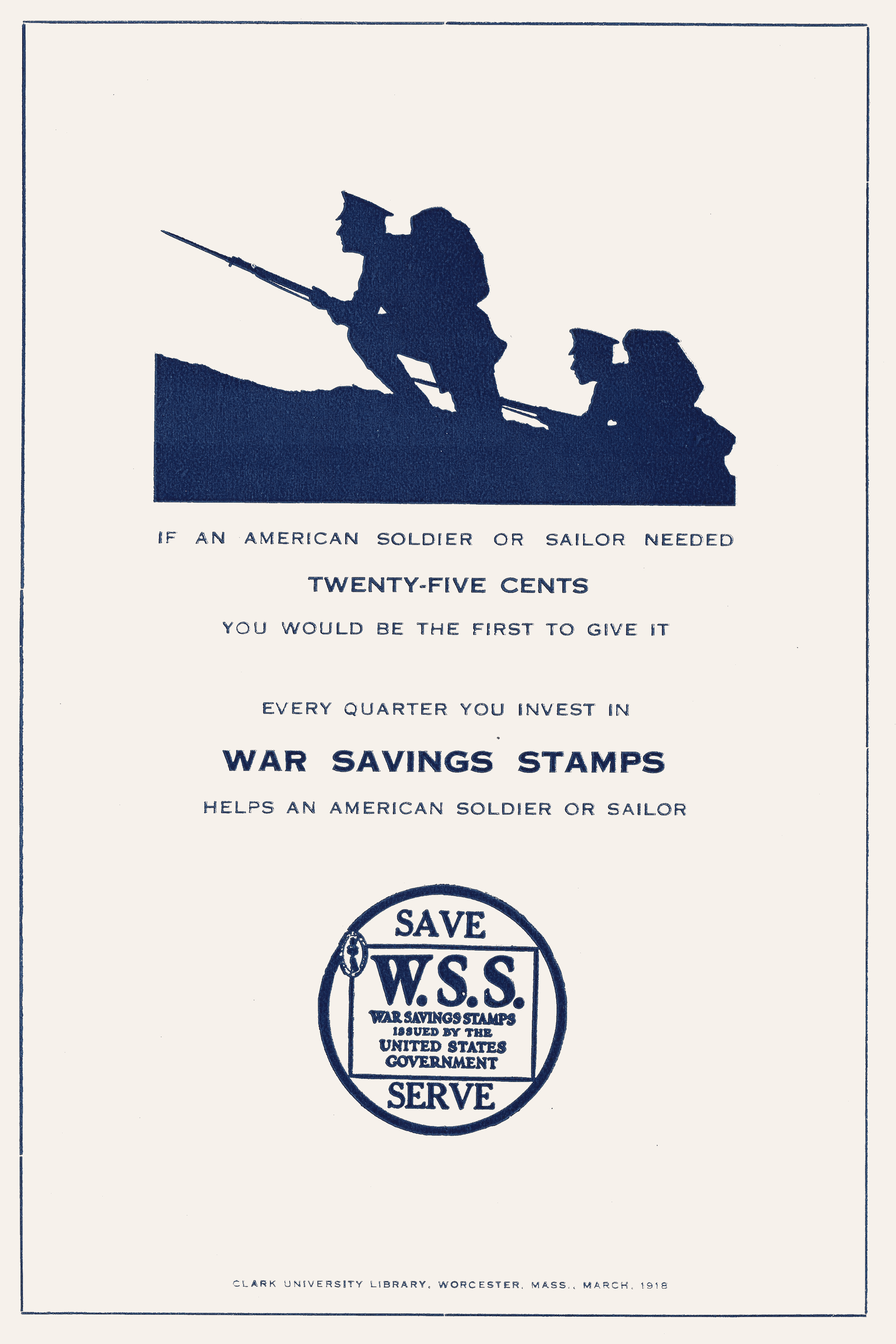
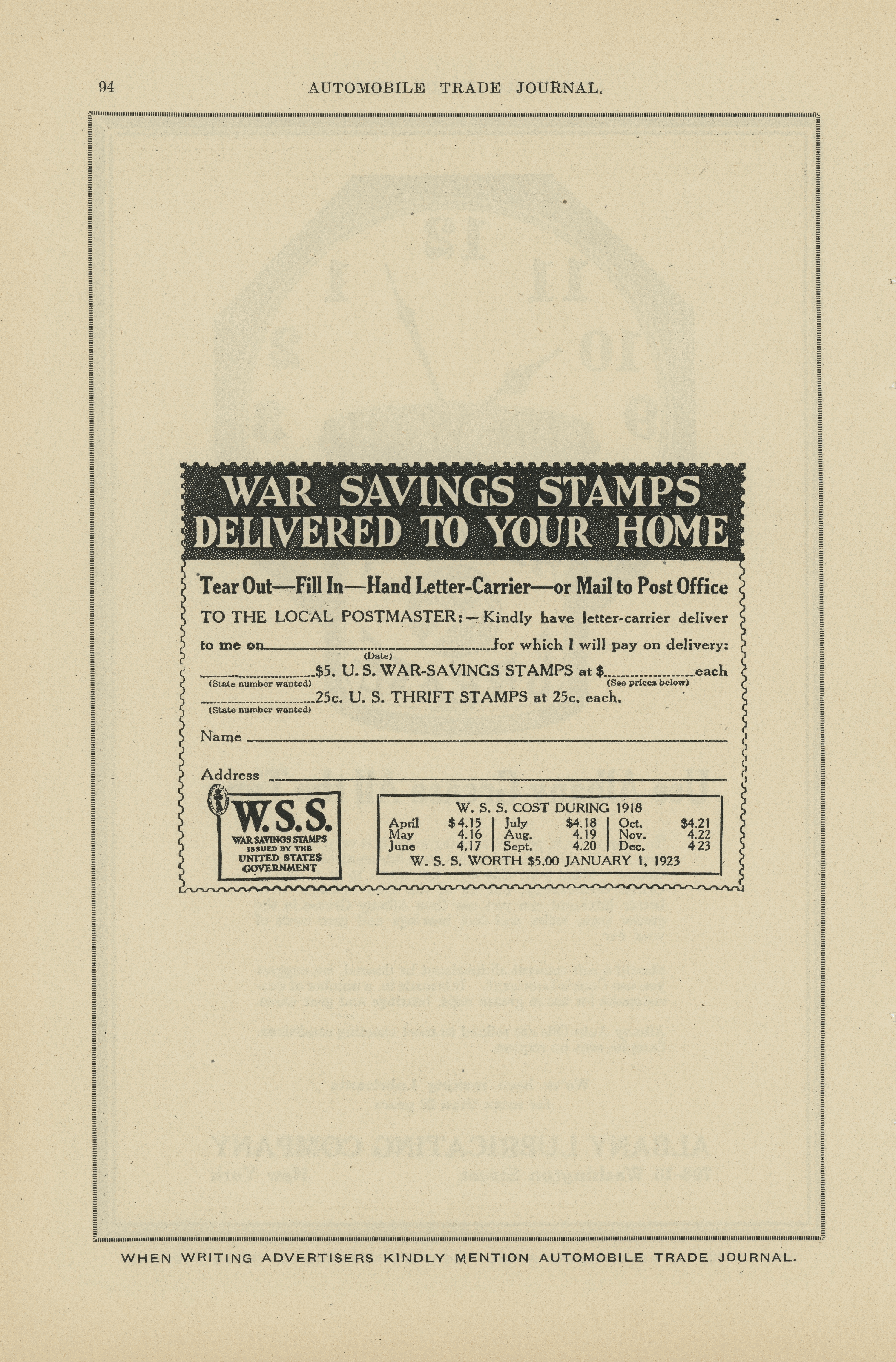

May 18, 1918 Issue: The Independent
1918 Issue: Automobile Trade Journal
1918 Issue: Ladies Home Journal
1918: Clark University Library Publication

October 1935 Investor America Magazine
This magazine was published by The American Federation of Investors Inc., a Chicago-based banking & business association. This issue features an article on the national debt, which at the time of publication, stood at some $32 billion.
"Circle Chart" Published Yields on Treasury Securities
Based on November 7, 1938 Closing Prices
Yield charts such as this were routinely published to give investors current market information on the various Treasury securities issued by the U.S. government
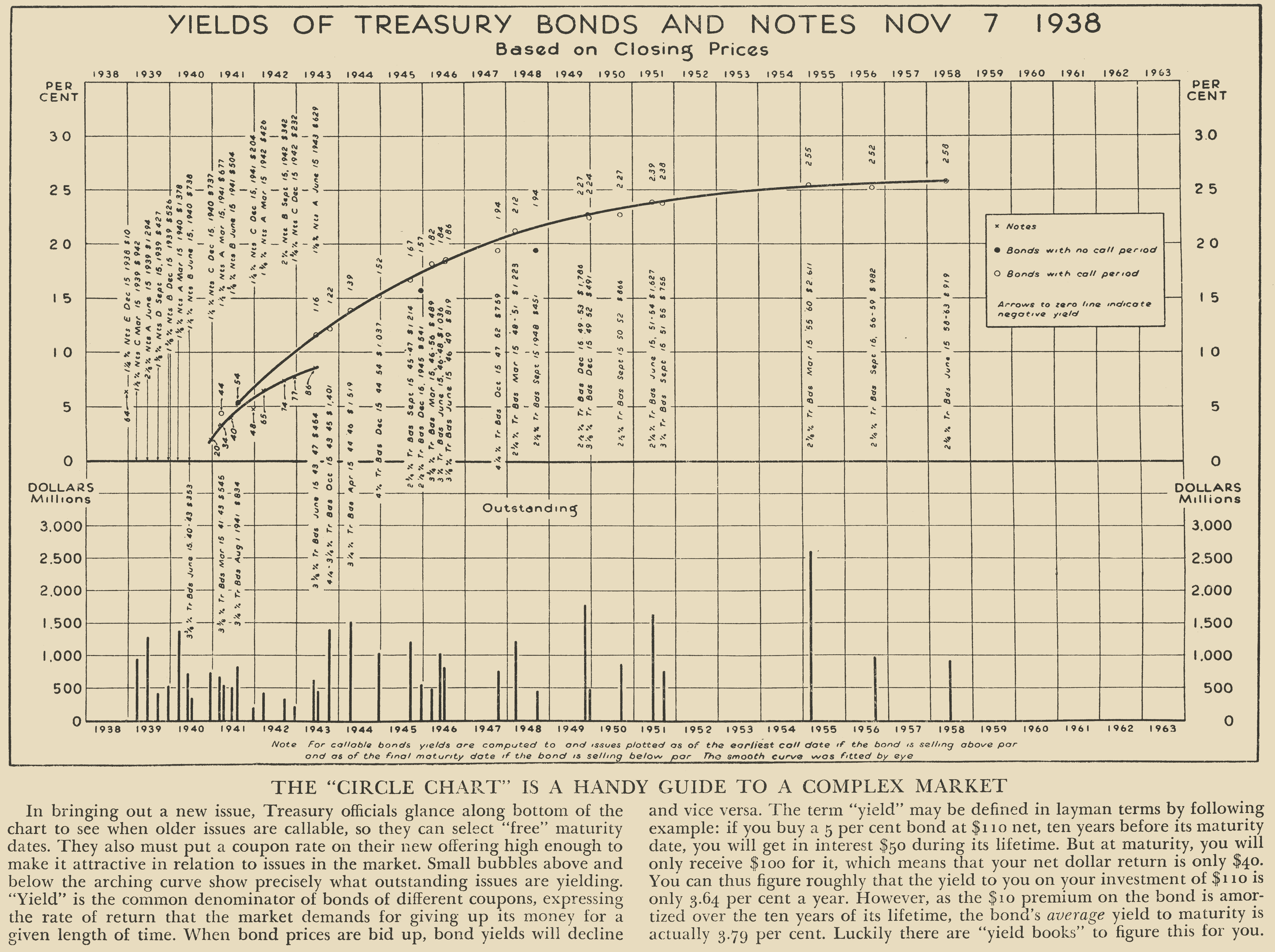
National Geographic Magazine U.S. Savings Bonds Advertisements





December 1937 National Geographic Magazine
United States Savings Bond Ad

1941 Life Magazine
United States Savings Bond Ad

July 1944 Woman's Day Magazine
United States Savings Bond Cover Story

January 1947 Outdoor Life Magazine
United States Savings Bond Ad
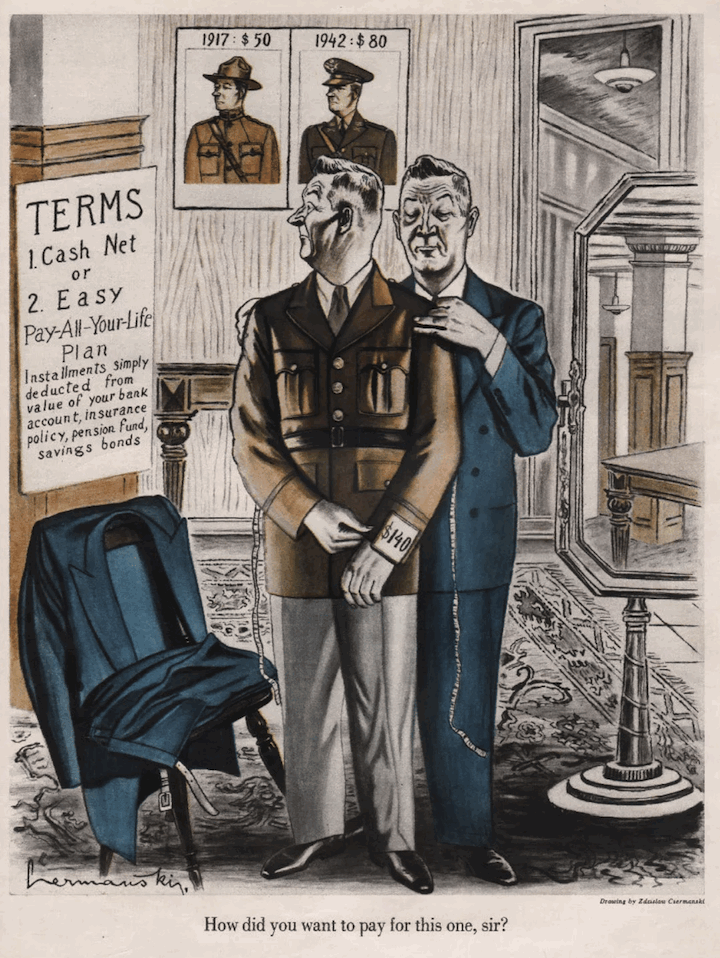
October 1950 Fortune Magazine
"How did you want to pay for this one?" Editorial Cartoon
This illustration depicts an unnamed Army general being fitted for a uniform. The reference of other uniforms and their costs relates to the U.S. expenditures for WWI and WWII. The caption below questions how America will pay for the Korean War.
Drawn by Zdzislaw Czermanski
Copyright The Joe I. Herbstman Memorial Collection of American Finance
All Rights Reserved


